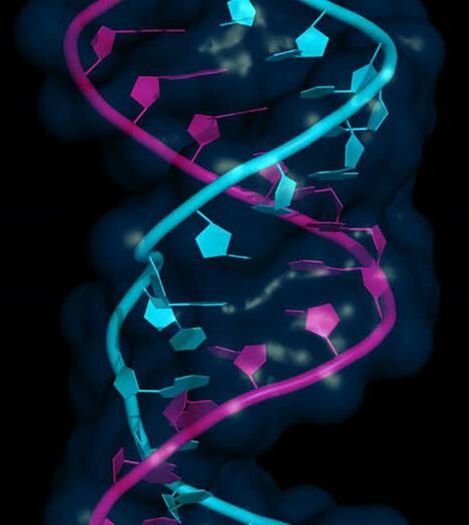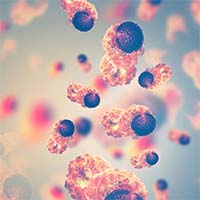Page 6100
Jun 20, 2021
A new book uses stories from tsunami survivors to decode deadly waves
Posted by Genevieve Klien in category: futurism
In ‘Tsunami: The World’s Greatest Waves,’ two scientists chronical hundreds of eyewitness accounts to show the human cost of life at the water’s edge.
Jun 20, 2021
Why the moons of rogue planets could surprise us with alien life
Posted by Atanas Atanasov in category: alien life
The search for life on exoplanets takes a fairly conservative approach. It focuses on life that is similar to that of Earth.
It’s time to think beyond “Earth-like” exoplanets and turn to some truly unusual places to find alien life: the exomoons of rogue planets in the Milky Way.
Jun 20, 2021
Biologists Raise Alarm: Brain Damage Caused by Even Small Amounts of Plasticizers
Posted by Jason Blain in categories: food, health, neuroscience
The plasticizers contained in many everyday objects can impair important brain functions in humans. Biologists from the University of Bayreuth warn of this danger in an article in Communications Biology. Their study shows that even small amounts of the plasticizers bisphenol A and bisphenol S disrupt the transmission of signals between nerve cells in the brains of fish. The researchers consider it very likely that similar interference can also occur in the brains of adult humans. They, therefore, call for the rapid development of alternative plasticizers that do not pose a risk to the central nervous system.
Bisphenols are plasticizers that are found in a large number of plastic products worldwide — for example, in food packaging, plastic tableware, drinking bottles, toys, tooth fillings, and babies’ dummies. In recent years, numerous health risks have already been associated with them, especially with bisphenol A (BPA). The Bayreuth research team led by Dr. Peter Machnik at the Animal Physiology research group (led by Prof. Dr. Stefan Schuster) has now for the first time investigated the effects of plasticizers on signal transmission between nerve cells in the adult brain. The study covers not only BPA, but also bisphenol S (BPS), which is often considered less harmful to health. Their findings: Both plasticizers impair communication between the nerve cells of the brain.
Jun 20, 2021
How mRNA technology is altering vaccine treatments
Posted by Dan Kummer in category: biotech/medical
“Well, it has to do with our technology,” said Hoge. “We use something called messenger RNA, or mRNA for short. It’s really just an instruction molecule, kind of like a software program for your cells. It just sends instructions about what the virus looks like to your immune system. So just like a software program, or a Word document, we can simply edit something, change it, and then manufacture it very, very quickly.”
He makes it sound so easy, but it’s taken more than a decade of research, and many technological hurdles. Now, the company has some big plans. “We’ve had an incredible year using messenger RNA to fight a pandemic,” Hoge said. “But we think we’re just starting in the infectious disease space, And so, there’s a large number of other vaccines we’re bringing forward.”
Moderna’s research pipeline includes everything from an HIV vaccine, to heart disease treatments, to vaccines for different kinds of cancer, including lymphoma and melanoma.
Jun 20, 2021
Scientists design superfast molecular motor
Posted by Dan Kummer in categories: chemistry, nanotechnology
Light-driven molecular motors have been around for over 20 years. These motors typically take microseconds to nanoseconds for one revolution. Thomas Jansen, associate professor of physics at the University of Groningen, and Master’s student Atreya Majumdar have now designed an even faster molecular motor. The new design is driven by light only and can make a full turn in picoseconds using the power of a single photon. Jansen says, “We have developed a new out-of-the-box design for a motor molecule that is much faster.” The design was published in The Journal of Physical Chemistry Letters on 7 June.
The new motor molecule design started with a project in which Jansen wanted to understand the energy landscape of excited chromophores. “These chromophores can attract or repel each other. I wondered if we could use this to make them do something,” explains Jansen. He gave the project to Atreya Majumdar, then a first-year student in the Top Master’s degree program in Nanoscience in Groningen. Majumdar simulated the interaction between two chromophores that were connected to form a single molecule.
Jun 20, 2021
Quantum computers are already detangling natures mysteries
Posted by Dan Kummer in categories: biological, chemistry, climatology, computing, information science, nuclear energy, particle physics, quantum physics, sustainability
As the number of qubits in early quantum computers increases, their creators are opening up access via the cloud. IBM has its IBM Q network, for instance, while Microsoft has integrated quantum devices into its Azure cloud-computing platform. By combining these platforms with quantum-inspired optimisation algorithms and variable quantum algorithms, researchers could start to see some early benefits of quantum computing in the fields of chemistry and biology within the next few years. In time, Google’s Sergio Boixo hopes that quantum computers will be able to tackle some of the existential crises facing our planet. “Climate change is an energy problem – energy is a physical, chemical process,” he says.
“Maybe if we build the tools that allow the simulations to be done, we can construct a new industrial revolution that will hopefully be a more efficient use of energy.” But eventually, the area where quantum computers might have the biggest impact is in quantum physics itself.
The Large Hadron Collider, the world’s largest particle accelerator, collects about 300 gigabytes of data a second as it smashes protons together to try and unlock the fundamental secrets of the universe. To analyse it requires huge amounts of computing power – right now it’s split across 170 data centres in 42 countries. Some scientists at CERN – the European Organisation for Nuclear Research – hope quantum computers could help speed up the analysis of data by enabling them to run more accurate simulations before conducting real-world tests. They’re starting to develop algorithms and models that will help them harness the power of quantum computers when the devices get good enough to help.
Jun 20, 2021
Nanobots could navigate through blood vessels to target cancers and clear blood clots
Posted by Dan Kummer in categories: biotech/medical, nanotechnology, robotics/AI
Nanobots, tiny nano-sized robots and vehicles that can navigate through blood vessels to reach the site of a disease could be used to deliver drugs to tumours that are otherwise difficult to treat.
Once injected or swallowed, most drugs rely upon the movement of body fluids to find their way around the body. It means that some types of disease can be difficult to treat effectively in this way.
One aggressive type of brain tumour known as glioblastoma, for example, kills hundreds of thousands of people a year. But because it produces finger-like projections into a patient’s brain tissue that damage the blood vessels around them, it is hard for drugs to reach the tumour site.
Jun 20, 2021
Chinese Pilots Are Also Dueling With AI Opponents In Simulated Dogfights And Losing: Report
Posted by Dan Kummer in categories: military, robotics/AI

It’s been over for human fighter pilots, it will come down to who has the best AI fighter aircraft. AI will also take over ground combat vehicles (tanks), ships, and last will be armed humanoid robot combat soldiers.
The reported testing of AI against Chinese fighter pilots mirrors US military efforts and underscores China’s major investments in this technology.
Jun 20, 2021
Facial recognition systems are denying unemployment benefits across the US
Posted by Genevieve Klien in categories: information science, robotics/AI
A recent string of problems suggests facial recognition’s reliability issues are hurting people in a moment of need. Motherboard reports that there are ongoing complaints about the ID.me facial recognition system at least 21 states use to verify people seeking unemployment benefits. People have gone weeks or months without benefits when the Face Match system doesn’t verify their identities, and have sometimes had no luck getting help through a video chat system meant to solve these problems.
ID.me chief Blake Hall blamed the problems on users rather than the technology. Face Match algorithms have “99.9% efficacy,” he said, and there was “no relationship” between skin tone and recognition failures. Hall instead suggested that people weren’t sharing selfies properly or otherwise weren’t following instructions.
Motherboard noted that at least some people have three attempts to pass the facial recognition check, though. The outlet also pointed out that the company’s claims of national unemployment fraud costs have ballooned rapidly in just the past few months, from a reported $100 billion to $400 billion. While Hall attributed that to expanding “data points,” he didn’t say just how his firm calculated the damage. It’s not clear just what the real fraud threat is, in other words.

















